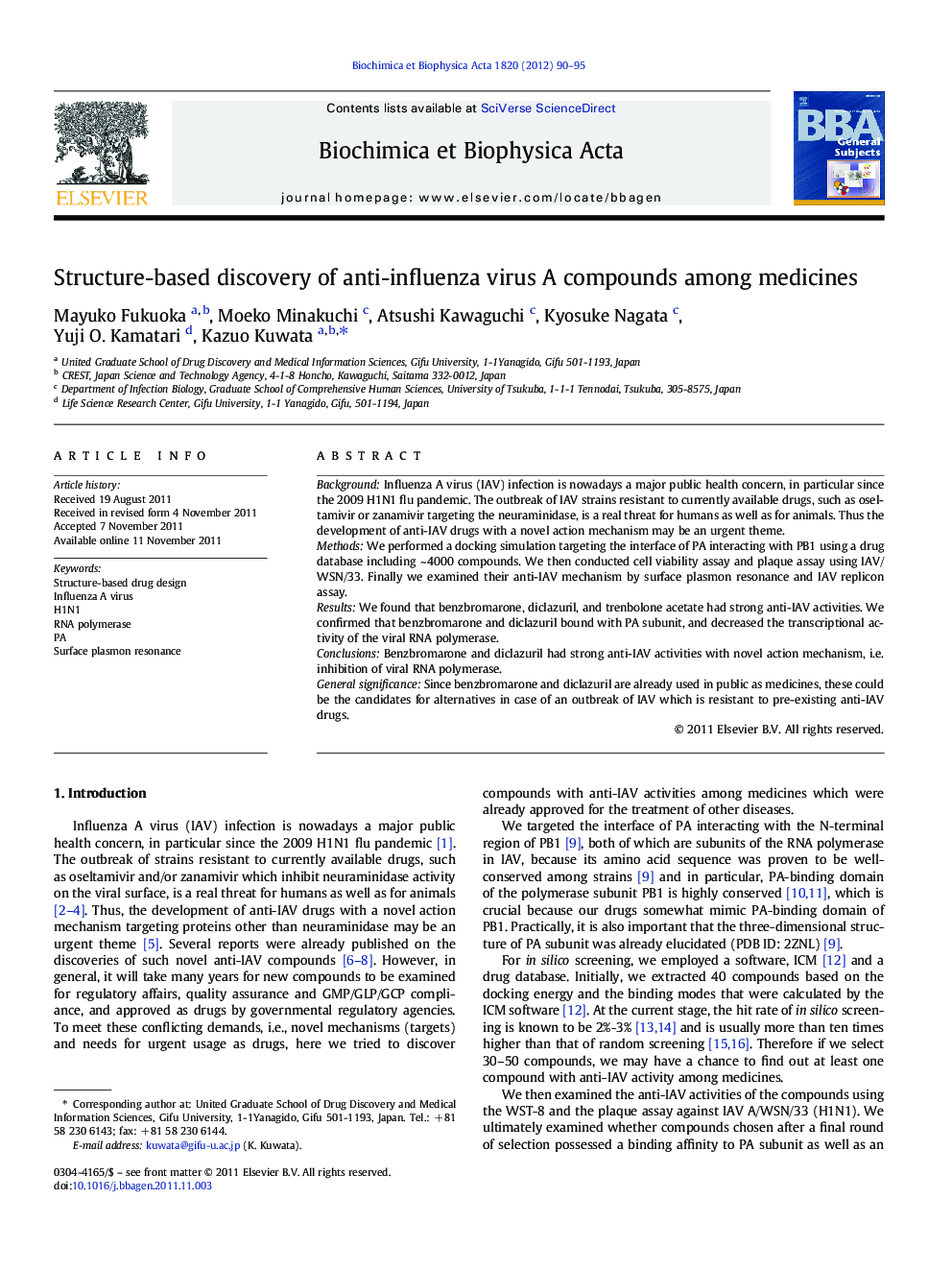| Article ID | Journal | Published Year | Pages | File Type |
|---|---|---|---|---|
| 1947786 | Biochimica et Biophysica Acta (BBA) - General Subjects | 2012 | 6 Pages |
BackgroundInfluenza A virus (IAV) infection is nowadays a major public health concern, in particular since the 2009 H1N1 flu pandemic. The outbreak of IAV strains resistant to currently available drugs, such as oseltamivir or zanamivir targeting the neuraminidase, is a real threat for humans as well as for animals. Thus the development of anti-IAV drugs with a novel action mechanism may be an urgent theme.MethodsWe performed a docking simulation targeting the interface of PA interacting with PB1 using a drug database including ~ 4000 compounds. We then conducted cell viability assay and plaque assay using IAV/WSN/33. Finally we examined their anti-IAV mechanism by surface plasmon resonance and IAV replicon assay.ResultsWe found that benzbromarone, diclazuril, and trenbolone acetate had strong anti-IAV activities. We confirmed that benzbromarone and diclazuril bound with PA subunit, and decreased the transcriptional activity of the viral RNA polymerase.ConclusionsBenzbromarone and diclazuril had strong anti-IAV activities with novel action mechanism, i.e. inhibition of viral RNA polymerase.General significanceSince benzbromarone and diclazuril are already used in public as medicines, these could be the candidates for alternatives in case of an outbreak of IAV which is resistant to pre-existing anti-IAV drugs.
► We performed structure-based drug discovery targeting PA of the influenza A virus. ► We discovered novel anti-influenza A virus compounds among medicines. ► We found benzbromarone and diclazuril bound with PA using SPR. ► We found that benzbromarone and diclazuril inhibit the viral RNA polymerase activity. ► These could be alternatives if influenza A virus is resistant to pre-existing drugs.
